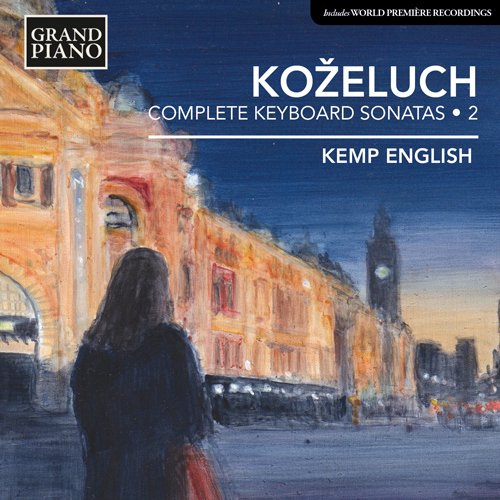
About this Release
“This album offers a mixture of works from 1780 that exemplify Koželuch’s growing stature as a pioneer of the late eighteenth–century Viennese classical sonata. Sonatas Nos. 5 and 7, in A and D major, are beautiful examples of melodious and superbly crafted works, the kind of compositions William S. Newman described as "Models of Classic perfection in form, line and fluency". While the Sonata No. 6 in C minor, with its groundbreaking and recurring tragic–pathetic slow introduction, gives us a tantalising foretaste of Mozart’s C minor Fantasie (1785) and Beethoven’s Pathetique Sonata (1798/99). Rounding off the volume, the Sonata No. 8 in F major "La Chasse", frames an exquisite set of variations with two virtuoso outer movements.” — Kemp English
KOŽELUCH, LEOPOLD (1747–1818)
Complete Keyboard Sonatas • 2
Nos. 5–8
- Kemp English, fortepiano
Leopold Koželuch, an eminent contemporary of Mozart and at the time considered by many to be the superior composer, was one of the first champions of the fortepiano, and his compositions for the instrument enshrined the highest qualities of Viennese style. Composed over nearly four decades his sonatas show progressive development, embracing lyrical melodies, delightful harmonic shifts, and foretastes of Romantic drama. They can be judged worthy to stand alongside those of Haydn, Dussek, Clementi and Mozart, and as a precursor to those of Beethoven.
This recording was made on a period instrument: Fortepiano by Thomas and Barbara Wolf (USA), after Anton Walter (c. 1795)
Tracklist
|
Piano Sonata in A Major, Op. 2, No. 2, P. XII:12 (1780) (00:16:38 )
|
|
1
I. Moderato * (00:06:26)
|
|
2
II. Andante * (00:06:00)
|
|
3
III. Allegretto * (00:04:11)
|
|
Piano Sonata in C Minor, Op. 2, No. 3, P. XII:13 (1780) (00:12:21 )
|
|
4
I. Largo - Poco presto (00:08:40)
|
|
5
II. Allegretto (00:03:45)
|
|
Piano Sonata in D Major, P. XII:14 () (00:12:50 )
|
|
6
I. Allegro moderato * (00:05:02)
|
|
7
II. Menuetto * (00:04:42)
|
|
8
III. Rondo: Allegro * (00:03:13)
|
|
Piano Sonata in F Major, Op. 5 () (00:19:44 )
|
|
9
I. Allegro molto * (00:06:51)
|
|
10
II. Andante con variazioni * (00:09:11)
|
|
11
III. Rondeau: Presto * (00:03:52)
|
The Artist(s)
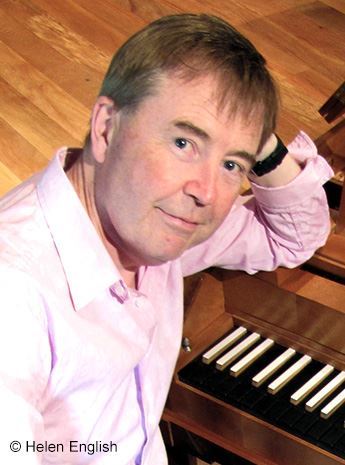 Kemp English is one of New Zealand’s leading concert performers. Much in demand as a solo organist, collaborative pianist, and specialist fortepiano exponent, he relishes the opportunity to work in a diverse array of styles and periods. He enjoyed a distinguished studentship at the Royal Academy of Music in London and later completed a Master of Arts degree in Music Performance at the University of York. In 2001 he was elected an Associate of the Royal Academy of Music—an honour recognising former students of the Academy who have achieved distinction in the profession.
Kemp English is one of New Zealand’s leading concert performers. Much in demand as a solo organist, collaborative pianist, and specialist fortepiano exponent, he relishes the opportunity to work in a diverse array of styles and periods. He enjoyed a distinguished studentship at the Royal Academy of Music in London and later completed a Master of Arts degree in Music Performance at the University of York. In 2001 he was elected an Associate of the Royal Academy of Music—an honour recognising former students of the Academy who have achieved distinction in the profession. The Composer(s)
 Leopold Koželuch was an esteemed contemporary of Mozart, and in many circles considered the finer composer. He was an early champion of the fortepiano and his Keyboard Sonatas are a treasure trove of late eighteenth-century Viennese keyboard style, including perfect examples of the form and foreshadowing Beethoven and Schubert.
Leopold Koželuch was an esteemed contemporary of Mozart, and in many circles considered the finer composer. He was an early champion of the fortepiano and his Keyboard Sonatas are a treasure trove of late eighteenth-century Viennese keyboard style, including perfect examples of the form and foreshadowing Beethoven and Schubert. Reviews
“This is entertaining music, especially when played with English’s panache and vitality” – Early Music
“His [English] light and shade and finger clarity are superb. ” – New Zealand Listener

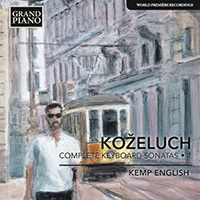
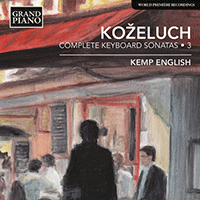
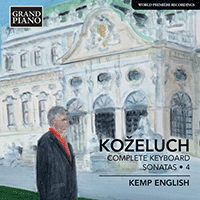
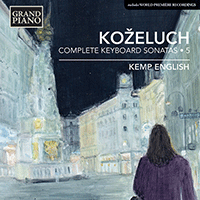
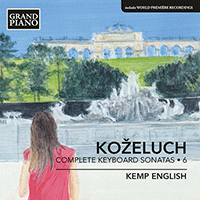
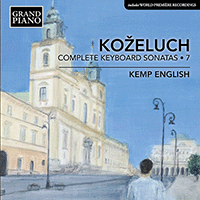
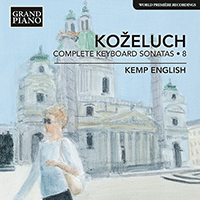
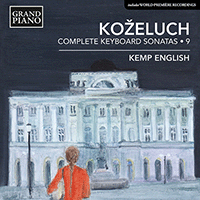

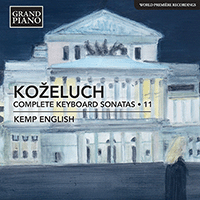

 Grand Piano has gained a reputation for producing high quality recordings of rare keyboard gems. Dedicated to the exploration of undiscovered piano repertoire, the label specialises in complete cycles of piano works by many lesser-known composers, whose output might otherwise have remained unknown and unrecorded.
Grand Piano has gained a reputation for producing high quality recordings of rare keyboard gems. Dedicated to the exploration of undiscovered piano repertoire, the label specialises in complete cycles of piano works by many lesser-known composers, whose output might otherwise have remained unknown and unrecorded.






